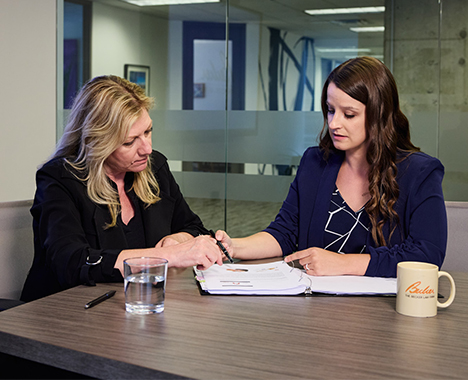Schedule a Consultation
216-480-4620Schedule a Consultation
216-480-4620
Birth injuries like caput succedaneum and cephalohematoma can be distressing for families, not only because of the physical harm to the newborn but also due to the emotional toll they leave behind. While both conditions involve trauma to a baby’s head during delivery, they differ in severity and potential complications. In some cases, these injuries may indicate medical malpractice, such as improper use of delivery tools or failure to monitor fetal distress. When medical professionals fail to meet the standard of care, the consequences can affect families for years.
At The Becker Law Firm, we understand the profound impact birth injuries can have on families. Our team provides compassionate yet aggressive representation to hold negligent medical providers accountable and secure justice for victims. With extensive experience in medical malpractice cases, we are committed to helping families navigate these challenging situations and pursue the compensation they deserve. If your family has been affected by a birth injury, contact The Becker Law Firm for the support and advocacy you need to protect your child’s future.
Caput succedaneum is a condition characterized by swelling of a newborn’s scalp, typically caused by pressure during delivery. This swelling occurs in the soft tissues of the scalp and is often visible immediately after birth. While it may look alarming, caput succedaneum is generally harmless and tends to resolve on its own within a few days. The condition does not involve bleeding or damage to the skull, but it can cause temporary discomfort for the baby. It is most commonly seen in prolonged or difficult labors, especially when delivery tools like vacuum extractors are used.
Here are some common causes of caput succedaneum:
Although caput succedaneum is usually benign, complications can arise in some cases. Babies with this condition may develop jaundice if the swelling leads to the breakdown of red blood cells, releasing bilirubin into the bloodstream. Additionally, improper handling or misdiagnosis of the condition could delay treatment for more serious underlying issues.
Cephalohematoma is a condition that occurs when blood collects between a newborn’s skull and the periosteum, the thin layer of tissue covering the bone. This condition is typically caused by trauma during delivery, such as the use of forceps or vacuum extractors, or prolonged pressure on the baby’s head while passing through the birth canal. Unlike caput succedaneum, cephalohematoma does not involve swelling of the soft tissues but rather localized bleeding that creates a firm, raised area on the baby’s head. The condition often becomes noticeable hours or even days after birth as the blood accumulates, and while it may resolve on its own over weeks or months, it can lead to serious complications if not properly monitored.
Here are some potential complications and risks associated with cephalohematoma:
The emotional and physical toll of cephalohematoma can be profound for both the baby and the mother. Witnessing a newborn endure complications or discomfort can be deeply traumatic, and the potential for long-term health issues adds to the stress.
Caput succedaneum and cephalohematoma can sometimes signal medical negligence when they result from improper care during labor and delivery. While these conditions can occur naturally in some cases, they may also arise due to preventable errors or a failure to meet the standard of care. Medical negligence occurs when healthcare providers take actions—or fail to take actions—that directly lead to harm for the baby or mother. When these conditions are caused by negligence, families may face unnecessary physical, emotional, and financial burdens.
Here are some indications of medical negligence related to these conditions:
When these preventable mistakes occur, they can have lasting consequences for the child and family. Seeking accountability for medical negligence is essential to ensure justice, secure compensation for damages, and promote safer practices in the future.
Protecting your child’s future after a birth injury caused by medical negligence is not only about seeking justice but also about ensuring they have the resources needed to thrive. Families affected by medical errors during delivery have legal options to pursue compensation for the harm caused. This compensation can help cover the costs of medical care, ongoing treatments, and the emotional toll of the injury, providing much-needed support for both the child and the family.
Here are some types of compensation you can seek:
This compensation can provide your child with access to the medical and therapeutic support they need to reach their full potential. It also helps ensure the financial stability of your family, allowing you to focus on your child’s well-being without the added stress of overwhelming expenses.
The Becker Law Firm is a trusted advocate for families affected by birth injuries, offering decades of experience in handling medical malpractice cases with precision and care. Their team understands the profound impact a birth injury can have on a family and works tirelessly to uncover the truth and hold negligent medical providers accountable. With access to a network of medical experts, The Becker Law Firm ensures that every case is built on a foundation of strong evidence and expert testimony, giving families the best chance at securing justice and the resources they need to support their child’s future.
Here’s how an experienced medical malpractice attorney can support your claim:
If your child has been affected by a birth injury, the personal injury attorneys at The Becker Law Firm are here to stand by your side with relentless dedication and compassionate representation. Contact The Becker Law Firm today to discuss your case and take the first step toward securing the justice and support your family deserves.

